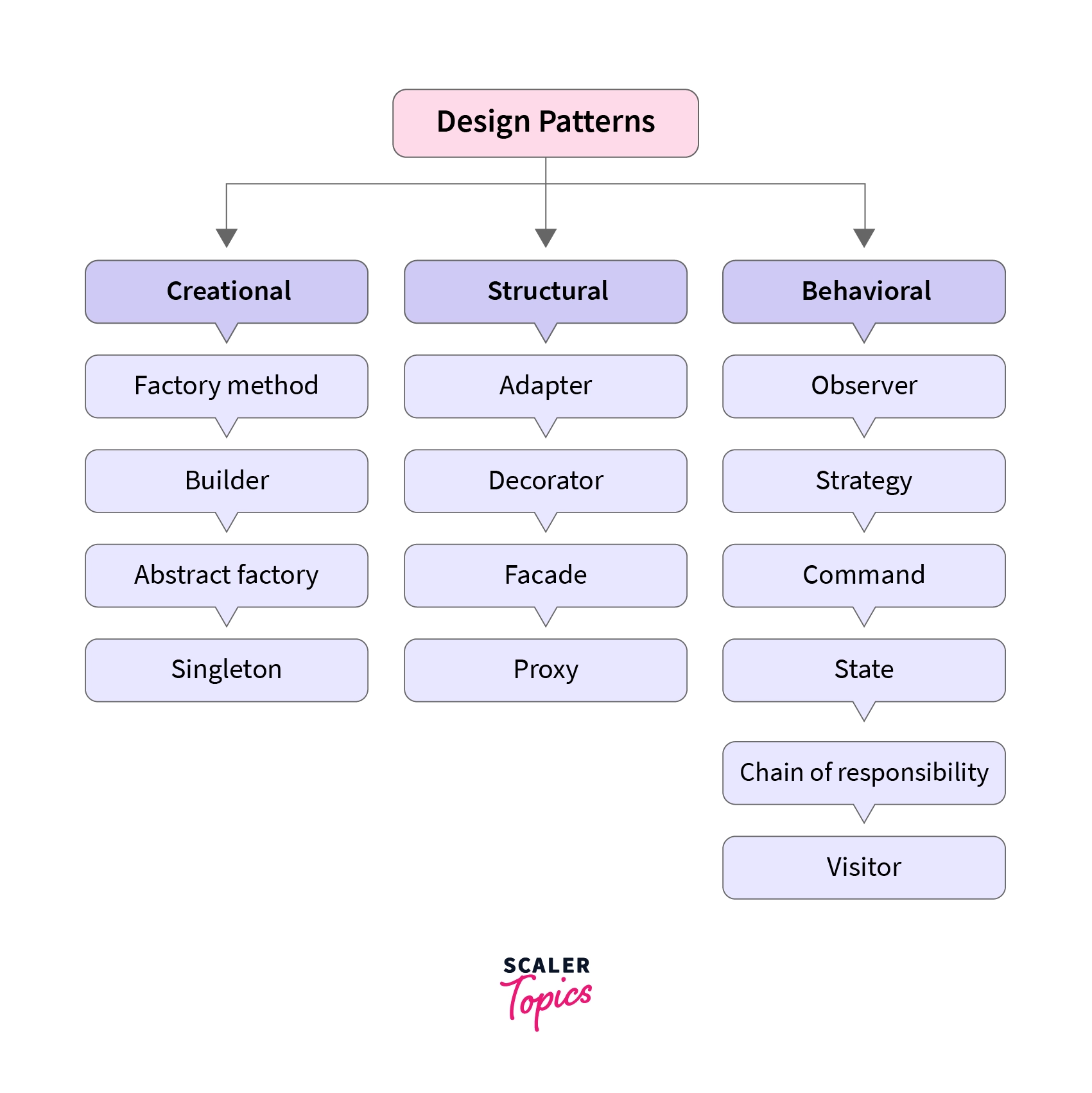Making Your Code Look Less Embarrassing
30 Nov 2023
Design Patterns: Making Your Code Look Less Embarrassing
When first learning how to code, programs are often filled with repetitive if else Boolean statements. As you become familiar with elementary techniques, you start to learn to apply design patterns without even realizing it. Design patterns are most described as a solution to reoccurring problems.
Types of Behavioral Patterns
It is said that 26 different design patterns fit into 3 different categories: behavioral, structural, and Creational. Although many design patterns can fit into this category, they all have the same goal of creating objects and making them as reusable as possible.
The creational design pattern for example allows for flexibility in your system architecture. This specific pattern focuses on creating objects and making them reusable. This involves having classes with multiple return types. This allows you to be able to use the same object in multiple situations.
Behavioral design patterns deal with the way objects operate between each other, making them more dynamic. Because this design pattern focuses on communication, it is largely used in web applications.
Lastly, the structural design pattern aims to simplify the design by identifying relationships between them. This pattern makes it easier to adjust small parts of an algorithm without having to manipulate the entire system.
Final Thoughts
The great part about design patterns is that not only does it make your code more reliable, it can be faster, and much easier to manipulate your code. As you work with a team, it is imperative that you make your code easy to manipulate.